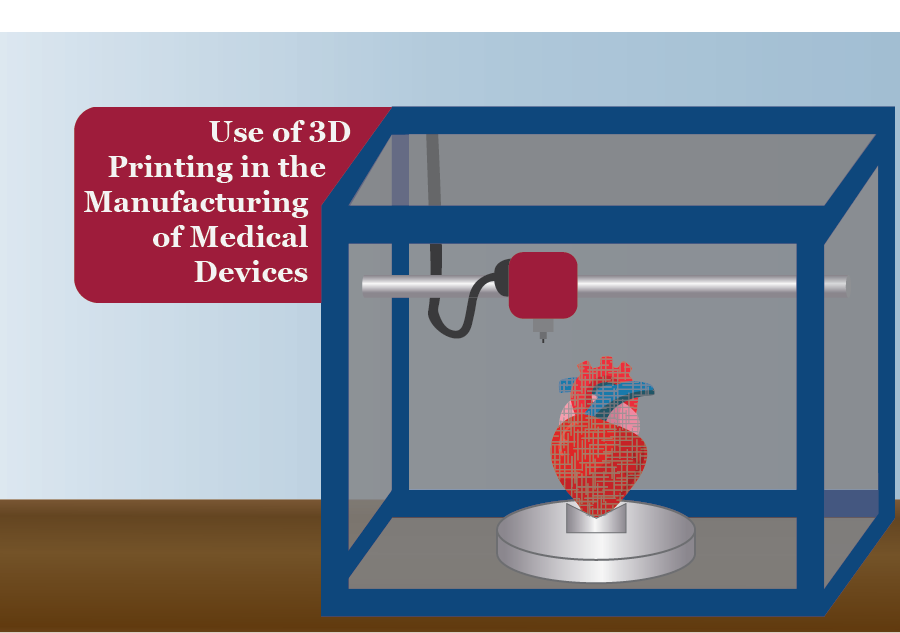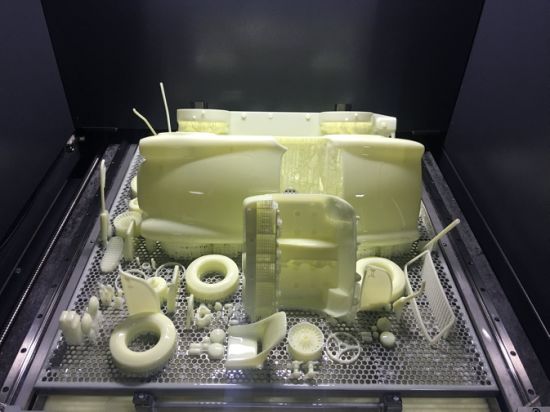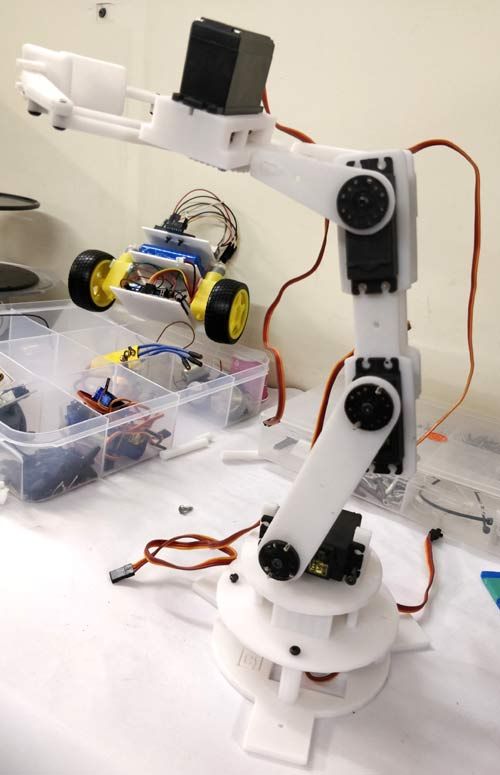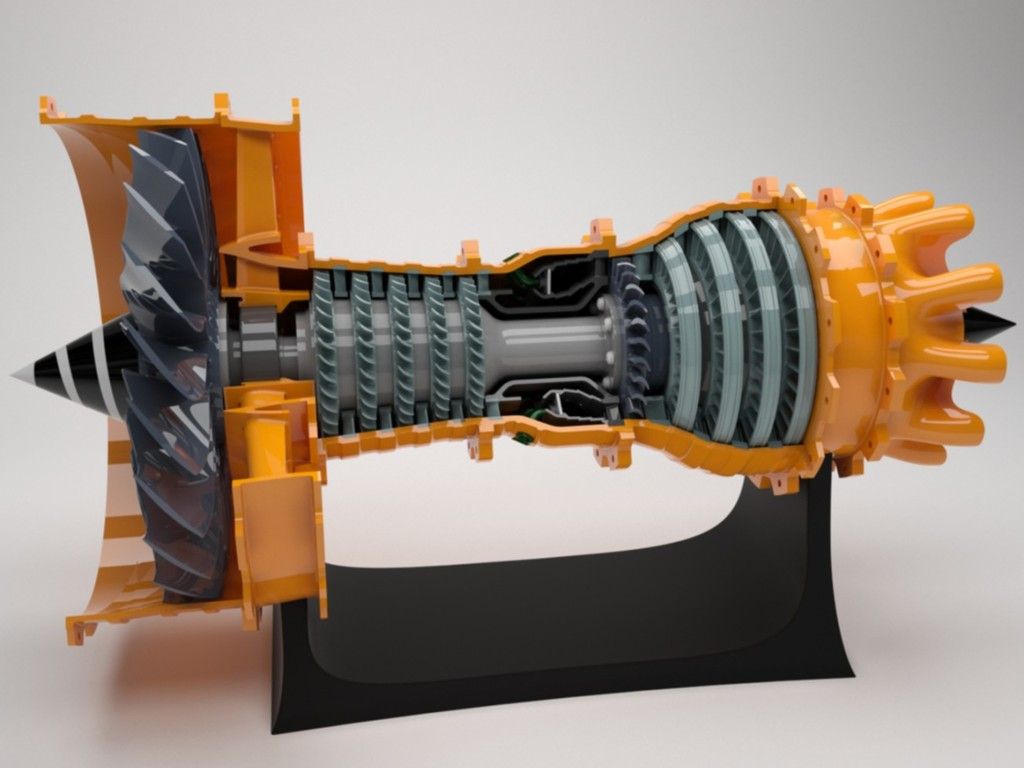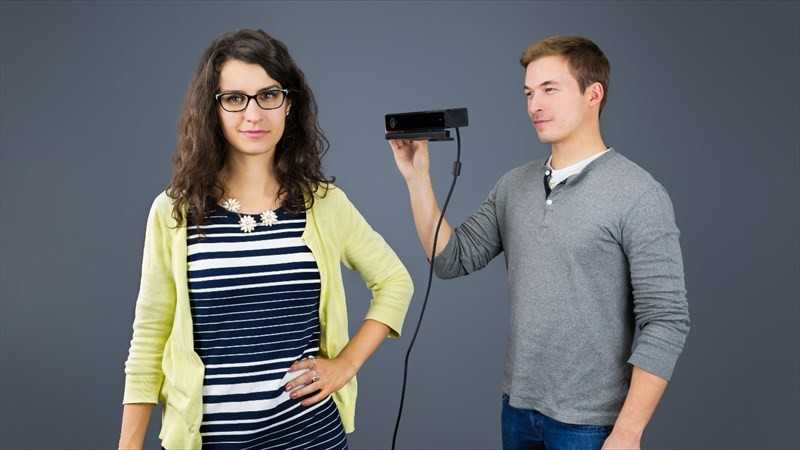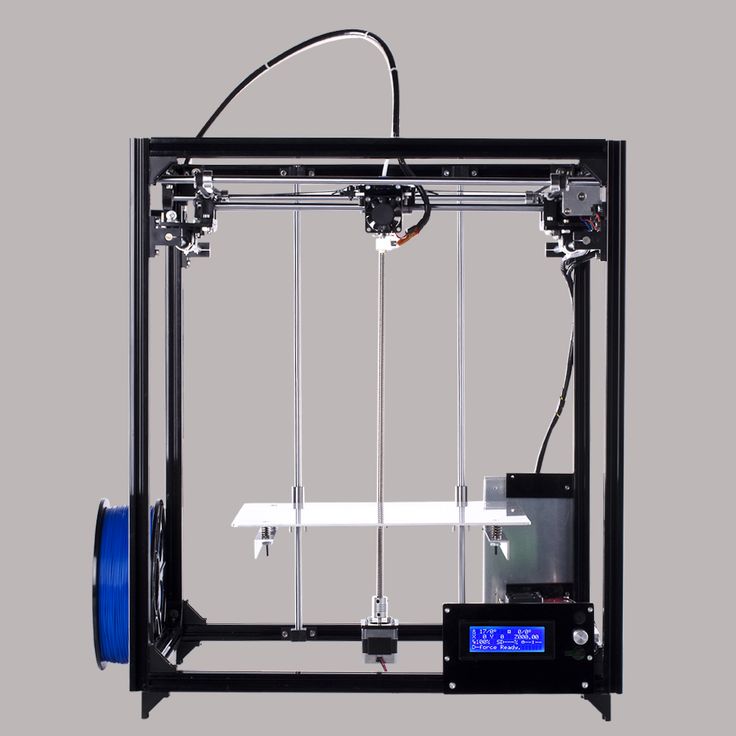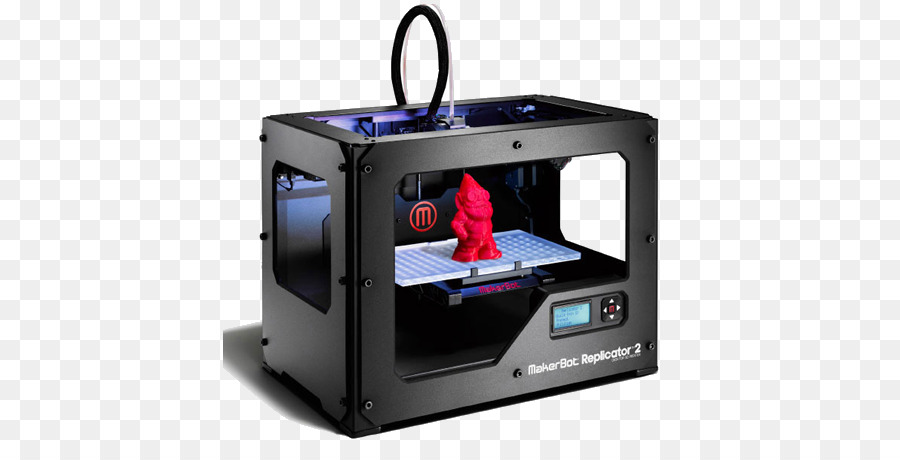Transparent resin 3d printing
Guide to Transparent 3D Printing
Clear materials, such as glass or acrylic, have a wide variety of applications in consumer products, industrial uses, healthcare, and more. However, prototyping or producing low volumes of clear parts can be expensive and inefficient with traditional methods, which raises the question: can you 3D print transparent parts? The answer is yes, with the right technology and materials.
Stereolithography (SLA) 3D printing can create transparent objects that, with some post-processing, can be made optically clear. Formlabs' latest SLA 3D printers, the compact Form 3+ and the large format Form 3L, take clarity one step further by using a flexible resin tank that reduces peel forces, resulting in clearer parts with smooth surface finish.
There are multiple materials for producing translucent and transparent 3D printed parts:
- Clear Resin is a rigid material that polishes to near optical transparency, making it ideal for fluidics, moldmaking, optics, lighting, showcasing internal features, and any parts requiring translucency.
- BioMed Clear Resin is a rigid, transparent material for biocompatible applications requiring long-term skin or mucosal membrane contact.
- Elastic 50A Resin is a soft and stretchy material that is semi-translucent. It is ideal for prototyping parts normally produced with silicone.
- Flexible 80A Resin is a more stiff soft-touch material that is also semi-translucent. It is ideal for simulating the flexibility of rubber or TPU.
In this guide, we walk you through various finishing methods to create transparent 3D printed parts for a variety of applications, from optics to light pipes to fluidics. Methods range from quick solutions for adequate transparency, to niche techniques for creating optically clear parts.
Clear and transparent 3D prints are ideal for creating clear prototype parts, showing internal cavities and details, housing LEDs, creating windows, or printing see though anatomical models and medical devices. Formlabs and our customers have used Clear Resin to create a completely optically clear lens for a fully 3D printed camera, tiles for a Fresnel lens installation in Times Square, light pipes, prisms, millifluidic devices, and more.
Formlabs applications engineer Amos Dudley designed and 3D printed a lens for a fully 3D printed camera.
Sample part
Curious to see how transparent 3D prints SLA 3D printing is capable of? We’ll ship a free clear 3D printed part to your office.
Request a Free Sample Part
Yes, but with caveats. Polymethylmethacrylate (PMMA), commonly known as acrylic, is a transparent thermoplastic that is commonly used as a more durable alternative to glass. While 3D printing acrylic is possible with fused deposition modeling (FDM) 3D printers, it's not really user-friendly as the material itself is toxic and prone to warping, while the 3D printed parts are only semi-translucent due to the lower resolution of FDM printers.
For a 3D printing acrylic-like fully transparent parts, we recommend printing on an SLA 3D printer with Clear Resin and then post-processing the 3D printed parts for full transparency using one of the methods mentioned in this article. Using an acrylic spray is one of the methods to ensure clarity.
Using an acrylic spray is one of the methods to ensure clarity.
We’ve tested several techniques for post-processing parts 3D printed in Clear Resin. In this post, we’ll cover manual sanding, clear coating, and resin dipping. Each finishing option requires varying levels of effort, depending on the degree of transparency and surface finish your part requires.
Applications: Manual sanding and polishing can be effective for simple shapes with few details, but are less suited to finishing complex models. It is very difficult to reach total optical transparency with this method.
You’ll have to sand to extremely fine grits to manually finish a transparent part, but with some effort, you can sand and polish parts to be as clear as a magnifying glass. It is, however, very challenging to completely eliminate all layer lines via manual finishing—you may notice micro-scratches when holding the part at a shallow angle to the light.
Instructions: Use a range of incremental sandpaper grits to smooth your surface, then polish the part with acrylic cleaner and a microfiber cloth.
At around 3000 grit, transparent 3D printed parts become glossy and very smooth to the touch. By 12000 grit, they are reflective. Try using a range of sandpaper and micromesh pads with grits from 400 to 12000, in increments of 200, slowly and carefully to clean the parts between grit levels and to eliminate scratches from the previous level before moving on to the next.
Our support site offers a simple visual step-by-step guide for manual sanding, including an optional finish with acrylic spray.
Tip: If you only need semi-transparency, simply use mineral oil to create an even finish and hide any light spots on your part.
We’ve tested a variety of methods of polishing clear 3D prints, from hand sanding and spray coating to resin dipping.
Applications: Spray coating is an easy, fast way to improve the clarity of parts without much reduction in detail. This method is effective for all kinds of models, as it's able to coat complex details that may be hard to reach with regular sanding and polishing.
Clear coating alone helps to conceal layer lines and protect parts from UV exposure, which can cause yellowing and unintended post-curing. If you’re looking for a smooth, glass-like surface finish, perform the manual sanding and polishing technique prior to coating; the more sanding that comes before clear coating, the better the clarity. This additional step is great for post-processing prototypes that look like fully transparent plastic, e.g., packaging, bottles, and microfluidics.
Instructions: There are several options for clear coating 3D prints, from inexpensive sprays to products that require a dedicated room and tools.
- General purpose clear coat spray paints: There is a wide variety of high quality and affordable sprays. We recommend using a 2K clear coat.
- Automotive sprays: High-solids acrylic urethane clearcoats offer very high gloss and are designed for air-dry and baking conditions, but require a spray gun and dedicated space for spraying, as well as a base coat.

For spray coating, start with a clean, dry part already washed in isopropyl alcohol (IPA). Do not post-cure the part ahead of spraying, as this can cause yellowing. Let the part air dry. Once it’s completely dry, apply two to three spray coats in a dust-free environment.
Tip: For a fee, auto body shops may do the coating for you with a spray like Lesonal Universal Clear. In most cases, these shops will use a light solvent, like naptha to clean and prepare the part’s surface prior to painting.
For an installation in Times Square, Window to the Heart, the Formlabs and Aranda/Lasch teams worked with an auto body shop to spray coat each tile in Lesonal Universal Clear.
Applications: This method is best for when you need very transparent parts, and only works on flat or near-flat surfaces, such as a lens or a window into the interior of a part.
Resin dipping results in parts that are extremely smooth, with clear and sharp surface reflections.
This technique can be used to create an even smoother finish for parts printed in other SLA materials, although it can reduce detail.
Instructions: Apply Clear Resin to the part with drops from a syringe, or by dipping the part as as desired. The viscous resin will fill layers and scratches on the part, forming a completely smooth surface.
The layer of resin should be as thin as possible, while still eliminating layer lines. Pull off any bubbles with a syringe. Completely post-cure the part using the appropriate settings, then repeat the process for the other side, both dipping and post-curing.
Three stages of resin-dipped lenses, with the final lens on the left.
Note: The dipping process alters focal length slightly for lenses. For our 3D printed camera lens, Formlabs applications engineer Amos Dudley designed and printed a lens testing device.
With the Form 3+ SLA 3D printer, you can create clear and fully transparent 3D prints affordably and with minimal post-processing.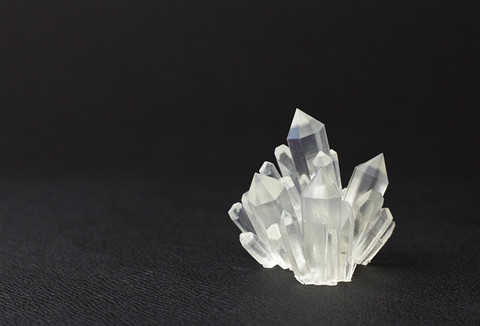
Download our white paper for a detailed overview of SLA ecosystems and the step-by-step 3D printing workflow.
Curious to see the quality and clarity firsthand? Request a free transparent 3D printed sample part.
Request a Sample Printed in Clear Resin
Clear transparant & non-yellowing 3D-printing resin
Clear and transparent 3D prints are ideal for creating clear prototype parts, showing internal cavities and details. Applications like LED housings, prototyping lens parts and microfluidic devices are a few examples of application 3D-printed with clear resin. Learn how propmaker Campman Animatronics used Clear Impact to 3D-print a transparant transverse flute for the Dutch Queens 50th birthday.
Resin 3D-printing is one of the only 3D-printing technologies that can create high resolution transparent plastic parts. One of the challenges in resin 3D-printing is to produce perfect transparent parts that will not yellow over time. Often, first-time-users are surprised by the transparency of parts fresh from the printer, as seen in the Coca-Cola bottle in the image below on the left side.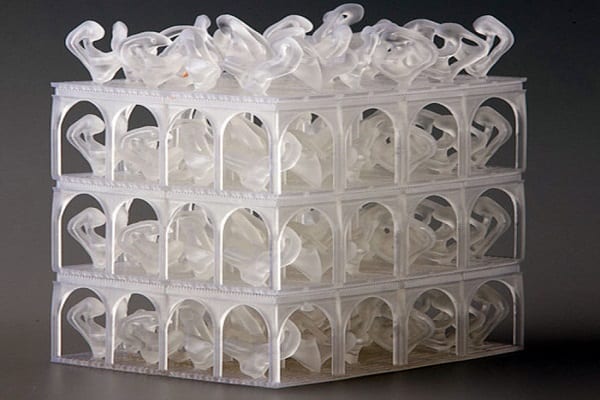 After washing and drying, the transparency is lost and the part has a “frost” finish (middle bottle). A post-processing step is necessary to create long-lasting transparent plastic parts.
After washing and drying, the transparency is lost and the part has a “frost” finish (middle bottle). A post-processing step is necessary to create long-lasting transparent plastic parts.
Figure 1: Parts 3D-printed with Liqcreate Clear Impact resin, on the left part fresh from the printer, middle after washing and drying, on the right after coating.
There are a wide range of clear resins available for 3D-printing. Not every resin is suitable for long lasting transparent parts. For instance epoxy resins, often used in large 355nm laser 3D-printers are notorious for their discoloration over time. Next to epoxides, acrylates and urethanes are used in LCD, DLP, desktop laser based and MSLA 3D-printers. Depending on the quality of the resin, some are better for clear, non-yellowing parts. There are a few factors that are important when it comes to transparent parts:
- – Resin formulation and quality
- – Post-processing
- – Post-curing
Resin formulation and type of 3D-printer
The basics of good transparent and low/non-yellowing parts is the resin itself.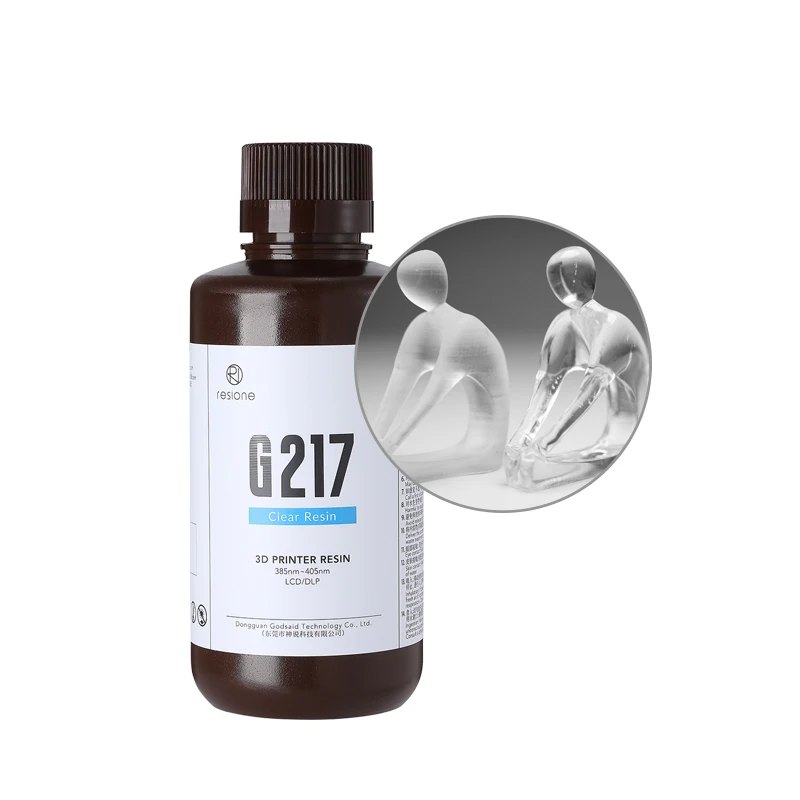 Low quality raw materials and impurities in the resin can cause extra yellowing over time. Next to selecting high quality raw materials, the resin technology and additives developed for Liqcreate Clear Impact will prevent extra yellowing over time.
Low quality raw materials and impurities in the resin can cause extra yellowing over time. Next to selecting high quality raw materials, the resin technology and additives developed for Liqcreate Clear Impact will prevent extra yellowing over time.
Post-curing clear parts
Post-curing is an important step in resin 3D-printing. During printing, the resin does not fully cure and is often soft and bendable. With a proper post-cure, its final properties are achieved. Often a good dose of UV (365, 385 or 405nm) at a slightly increased temperature is required for near 100% conversion. To get the least yellowing for clear parts during post-processing and after, it is important to post-cure at room temperature, preferably in three steps of 5 minutes. At elevated temperatures, side products can cause extra yellowing.
Post-processing clear parts
After printing, clear parts often look amazing. They are 100% transparent, which change when the parts are washed. After washing in IPA or Ethanol, the parts slowly turn into a frost finish once the solvent is drying.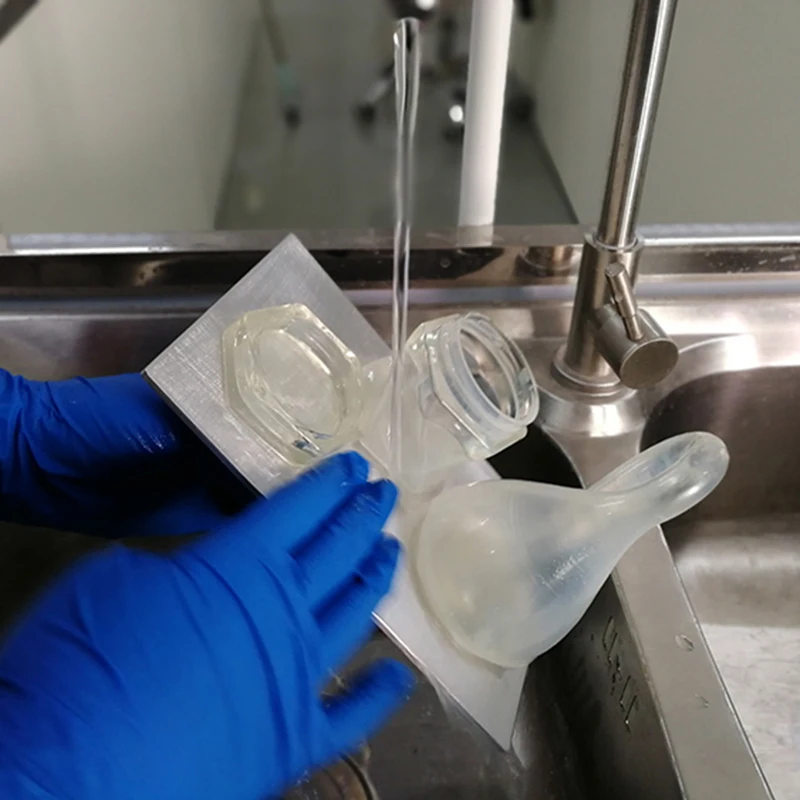 To get back to a transparent finish, some post-processing steps are required.
To get back to a transparent finish, some post-processing steps are required.
There are a few possibilities to post-process clear parts to get a transparent surface finish. The mostly used techniques are:
- – Sanding and polishing
- – Resin dipping
- – Nitrogen UV-curing
- – Spray coating
Sanding and polishing
Manual sanding and polishing is an effective and affordable method for parts with simple shapes. Often solid parts like lenses, microfluidic devices or solid parts like prisms can be effectively turned into transparent parts. Start with a rough sandpaper grid and work towards a very smooth grid. Sand and polish all the layer lines and defects away and eventually with the finest grid, parts turn transparent. The final finish should be polished with a microfiber and special cleaner. A polishing wheel can make this job easier, as long as the parts are not too complex and difficult to reach by hand or wheel.
Resin dipping
Resin dipping was first proposed by Formlabs in their article on post-processing of clear parts. It works by dipping the part in 3D-printing resin and then post-cure it. After a few layers the parts turn transparent. It should be noted that 3D-printing resin is perhaps not the best type of resin to use as a coating. The viscosity and sticky surface finish will not be ideal for daily used parts and the details are partly faded away by the layer of the resin.
It works by dipping the part in 3D-printing resin and then post-cure it. After a few layers the parts turn transparent. It should be noted that 3D-printing resin is perhaps not the best type of resin to use as a coating. The viscosity and sticky surface finish will not be ideal for daily used parts and the details are partly faded away by the layer of the resin.
Nitrogen curing
Taking the best part of resin dipping and making it even better, you end-up with nitrogen curing your parts. When your parts are printed, don’t wash them and let most of the resin drip off the part. This way a thin resin coating is left on the part. Adding a bit of heat can make the resin layer thinner to preserve more details. When the layer is thin enough, cure the part in an UV-chamber with nitrogen. This will eliminate all the oxygen and give a non-sticky and transparent part.
Spray coating
Easiest of all is to wash your parts with IPA/ethanol, dry and UV-cure them, followed by a spray coating. If the part is simple, a sanding step can be executed before coating. This will increase the translucency and erases the pixel and printing layers. Use an acrylic spray and spray multiple layers to get good surface finish. The Coca Cola can in the picture above on the right side is made this way, without sanding. For an easy, affordable and fast process, this method is advised. The transparency can be boosted with adding more coating layers on top. After a few layers parts can look like the 3D-printed protective glass below.
If the part is simple, a sanding step can be executed before coating. This will increase the translucency and erases the pixel and printing layers. Use an acrylic spray and spray multiple layers to get good surface finish. The Coca Cola can in the picture above on the right side is made this way, without sanding. For an easy, affordable and fast process, this method is advised. The transparency can be boosted with adding more coating layers on top. After a few layers parts can look like the 3D-printed protective glass below.
Team Liqcreate wish you happy printing. If there are any questions or remarks, feel free to contact us at [email protected] any time.
FunToDo Nano Clear - perfectly transparent photopolymer
Consumables
ZOBU 3D ARTEL Anycubic Photon Wanhao Duplicator 7 (D7)
In our assortment replenishment - Photopolymer FunToDo Nano Clear, transparent (1 kg)
Nano Clear - an ideally transparent photopolymer for DLP / LCD printing with minimal shrinkage. Prints with resolution up to 2 microns (0.002 mm). There are many applications where high precision transparent resin is required: microfluidics (microfluidics), micro illumination, microscopic filters, etc. This is a unique transparent resin that has no stray light! Nano Clear resin can be dyed. To obtain the desired shade of color, purchase a complete set of pigments (4 pieces of 20 ml) and mix in any proportion.
Prints with resolution up to 2 microns (0.002 mm). There are many applications where high precision transparent resin is required: microfluidics (microfluidics), micro illumination, microscopic filters, etc. This is a unique transparent resin that has no stray light! Nano Clear resin can be dyed. To obtain the desired shade of color, purchase a complete set of pigments (4 pieces of 20 ml) and mix in any proportion.
NanoClear resin model, after polymerization, is close in feel and properties to molded plastic product. Nano Clear polymer has a Shore D hardness of 85. Viscosity 80 mPas.
Advantages of FunToDo resin:
- Reasonable price and high accuracy. Layer thickness from 10 µm
- For super fast printing. Cure time 0.5 s for 0.02 mm layer with 240W lamp power
- Wide illumination range 225-415nm Resin suitable for most DLP/LED and SLA printers
- Ultra-low shrinkage. What you see on the screen is what you get! Object shrinkage only 0.
 5%
5% - Safety. FunToDo resins are low odor
FunToDo's resin is one of the best resins on the professional 3D printing market. This photopolymer differs from competitors in uniform saturated color, as well as high speed 3D printing. The resin is compatible with almost all DLP/LED and SLA 3D printers on the market:
Anycubic Photon is one of the best selling photopolymer printers
Anycubic Photon S - a novelty with modernized mechanics and a diode matrix, which has a directional illumination
3D Artel Zobu (bestseller!) - the most budgetary, but very reliable and fast 3D printer, with an autonomous control unit and control in Russian
3D Artel Zobu 3.0 - minimal stray light and the most accurate printing thanks to a matrix with a focusing lens
Wanhao D7 - a universal photopolymer printer model from the leader, Wanhao Wanhao D7 Plus - Offline 3D Printer with Commercial Slicer in Russian Wanhao Duplicator 8 is the largest printable area of a low cost printer
The combination of an affordable price, as well as a short exposure time, allows you to significantly save your money, reduce the cost of 3D printing and lead time.
A cure time of 0.5 seconds for a 0.02 mm layer is easily achieved on standard DLP printers with lamp power around 240W. Photopolymers operate in a very wide range of wavelengths, from very short wavelengths of 225nm to the visible light limit of 415nm. Thanks to a good combination of reagents, almost any light source can be used to initiate the polymerization process. FunToDo photopolymers have ultra-low shrinkage! Today's standard of 3.5% is considered low shrinkage, but we have limited shrinkage to 0.5%. What you see on your computer screen is what you get. A shrinkage of 3.5% seems small, but if you take a 10cm (100mm) object, 3.5% becomes 3.5mm! This is a huge difference compared to the 0.5mm on Phantoudu polymer. FunToDo resins have a low odor and hardly irritate the skin.
Other FunToDo resins available in our store:
FUN TO DO STANDARD BLEND 1000Fun To Do Snow White (Funtodo SW)Fun To Do Industrial Blend ResinFun To Do Dentifix-3DFun To Do Castable Blend (Funtodo CB) )Photopolymer FunToDo Deep Black
Follow author
Follow
Don't want
3
More interesting articles
24
Follow author
Follow
Don't want
Buttermilk for a catapult, or shaggy carbon
My next visit to research print.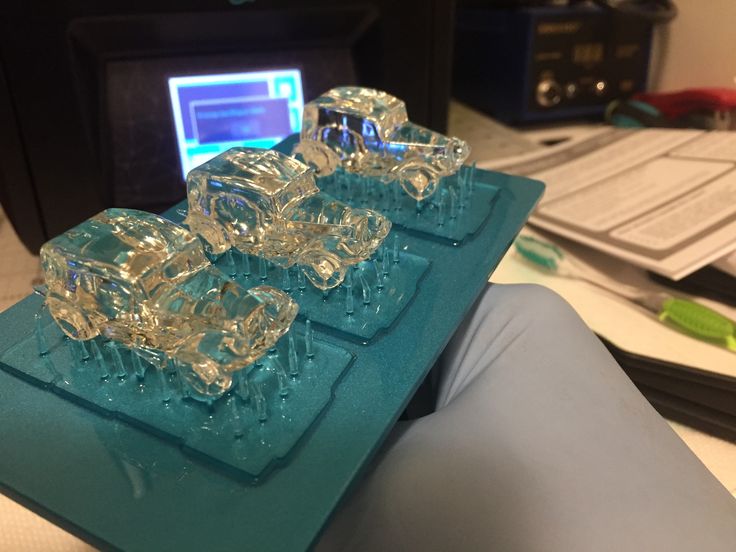 ..
..
Read more
ten
Subscribe to the author
Subscribe
Don't want
Hairy glass and children's billiards
As you can see from the previous article, me...
Read more
236
Subscribe to the author
Subscribe
Don't want
Good day, dear 3Dtoday readers!)
Everyone already knows that the company...
Read more
Overview of photopolymers for 3D printing
Rapid prototyping
Author: Nikita Kudryashov
Author: Nikita Kudryashov
Clara A: transparent photopolymer | Formula L1 and Formula W: analogues of ABS | Magna L90, Magna L100 and Magna W120: heat-resistant photopolymers | Robusta G and Robusta LR: tough and durable | Flexa W: analogue of polypropylene | Why ProtoFab? | Order test 3D printing
Laser stereolithography (SLA) has established itself as one of the most advanced technologies for prototyping, tooling, functional products and burnout master models on a 3D printer. The highest accuracy and strength of models, the ability to create objects with complex geometry, the speed of additive installations, as well as the ideal surface quality - these are the main advantages of the technology using photopolymer resin as a consumable material.
The highest accuracy and strength of models, the ability to create objects with complex geometry, the speed of additive installations, as well as the ideal surface quality - these are the main advantages of the technology using photopolymer resin as a consumable material.
Photopolymers are versatile plastics that make it possible to obtain high-quality models with desired properties, such as strength, elasticity, transparency, and resistance to high temperatures.
In this article, we will provide a brief overview of ProtoFab's range of materials. Based on solid experience, years of scientific research and a deep understanding of market needs, ProtoFab has made a real breakthrough in the field of photopolymers for 3D printing using SLA technology. The products of this Chinese company significantly reduce the cost of production and seriously compete with the established monopoly of Western manufacturers.
Recall that ProtoFab not only develops and manufactures stereolithographic 3D printers and consumables, but also fulfills customer orders in its own rapid prototyping centers.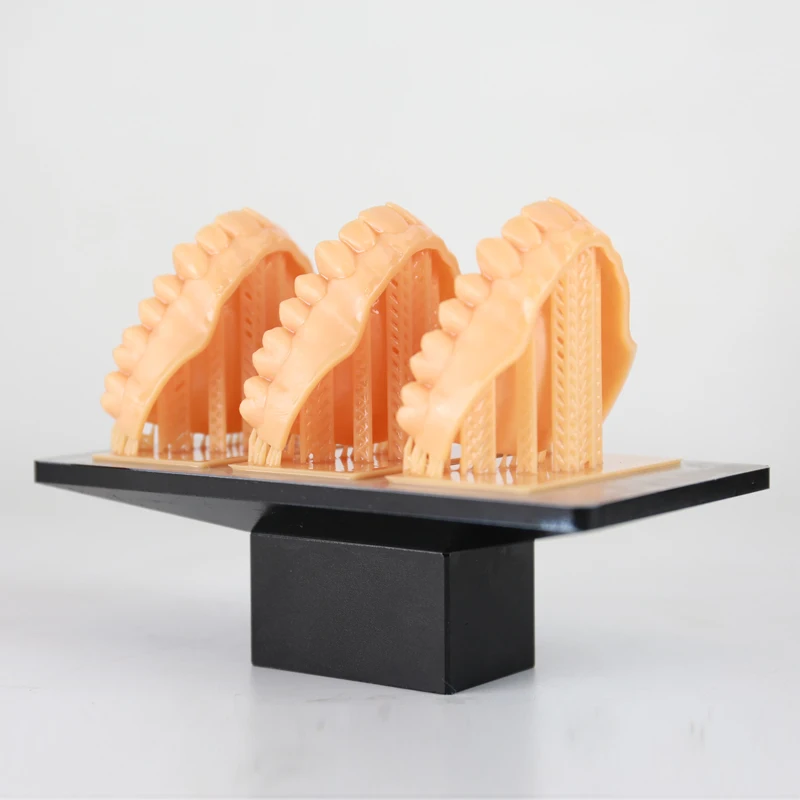 This allows the company to test manufactured materials and equipment, quickly respond to customer requests and improve product quality.
This allows the company to test manufactured materials and equipment, quickly respond to customer requests and improve product quality.
iQB Technologies experts recommend article: 7 reasons to choose a ProtoFab photopolymer 3D printer
Clara A: transparent photopolymer
Most photopolymers for SLA printers are white opaque materials. Due to the high requirements for transparency and colorlessness, as well as the difficulty of solving common problems (for example, the formation of bubbles during molding), transparent photopolymers for stereolithography are a rather rare product in all world markets. This niche is monopolized by several large manufacturers of 3D printing materials. High prices for their products increase the cost of 3D printing and seriously slow down the process of industrialization.
Prototype to check the appearance of the product. Transparency allows you to see the internal structure
One of the factors that can accelerate the development of additive technologies will be the development of colorless photopolymers with a high degree of transparency that do not form bubbles. The successful launch of such a product can play an important role in the development of the 3D printing market on the way to Industry 4.0. At the moment, all transparent photopolymers of large manufacturers have certain problems: discoloration (for example, yellowing), excessive hygroscopicity or insufficient transparency.
Clara A denture model
During the development of Clara A, the ProtoFab research team performed many experiments and compared hundreds of formulas. The resulting material has excellent transparency, excellent water resistance and dimensional stability, does not yellow and can be used in fast production cycles. No bubbles are formed during the molding process. Printed products are characterized by a smooth surface, dimensional accuracy, strength and impact resistance.
Printed products are characterized by a smooth surface, dimensional accuracy, strength and impact resistance.
Due to its ease of processing and the ability to create an “acrylic effect”, Clara A finds application in various fields, for example, in the production of headlights and other automotive components, electronics, lamps, optical research, as well as in the creation of master models or conceptual models and prototypes. This photopolymer can be used for the production of single items - lenses, packaging, models for hydrodynamic and aerodynamic tests, conceptual models.
Formula L1 and Formula W: Similar to ABS
3D printed product made of Formula L1 photopolymer
The high-strength Formula L1 material is a great alternative to ABS in 3D printing. Similarity to ABS is achieved due to the opaque white color, as well as moisture resistance and resistance to yellowing. The second photopolymer in this series is Formula W. The material has excellent strength, heat resistance, and is easy to process.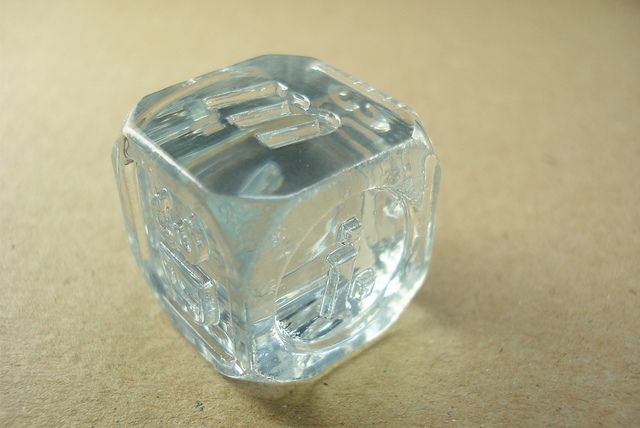 All this allows Formula L1 and W to be used for almost any purpose - from the creation of functional prototypes and concept models to the production of small batches of products.
All this allows Formula L1 and W to be used for almost any purpose - from the creation of functional prototypes and concept models to the production of small batches of products.
Creation of a ski helmet prototype from ProtoFab Formula W material
Formula L1 Resin Case Study: SLA Concept Car: How It's Made in China
Magna L90, Magna L100 and Magna W120: Heat Resistant Photopolymers
Magna L90 and Magna L100 withstand temperatures up to 70°C and 80°C respectively, making them similar to ABS in both appearance and physical characteristics. The ease of fabrication and excellent detail make these photopolymer resins suitable for use in automotive, heat-resistant or lighting fixtures, orthodontics or electronics cases. The surface of the products is smooth and requires almost no post-processing, which significantly reduces the production time for trial models. Magna L100 is also resistant to solvents and oils.
3D printed product made of Formula L1 photopolymer
The most advanced material in this series is Magna W120, resistant to temperatures up to 90°C and aggressive substances.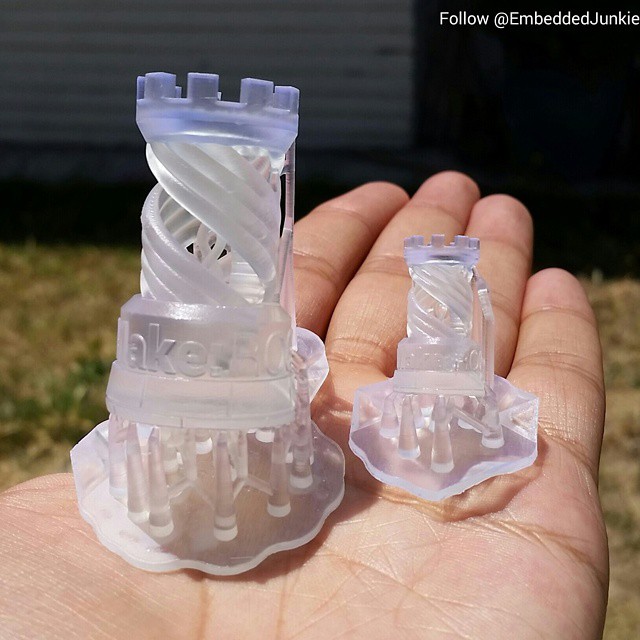 It is an ideal choice for temperature and wind tunnel testing.
It is an ideal choice for temperature and wind tunnel testing.
Robusta G and Robusta LR: tough and durable
Robusta G is a white photopolymer with high rigidity, precision and strength, which allows it to be used for the most demanding tasks. It is an excellent replacement for CNC-machined polypropylene or ABS and is excellent for producing functional prototypes, high-detail vacuum casting master models, mounting and fastening fixtures, clip-on or precision-fit parts.
3D printed product made of Formula L1 photopolymer
Robusta LR, part of the High-Tough series, features increased elongation at break and impact strength, as well as excellent accuracy and high temperature resistance. Similar to ABS and other thermoplastics, the product's smooth surface texture is easy to clean, making it ideal for functional prototypes and high-strength precision models, fasteners, clip-on or precision-fit parts.
Flexa W: equivalent to
polypropyleneMaterial Flexa W
An exceptionally flexible photopolymer that also has excellent strength and moisture resistance.


